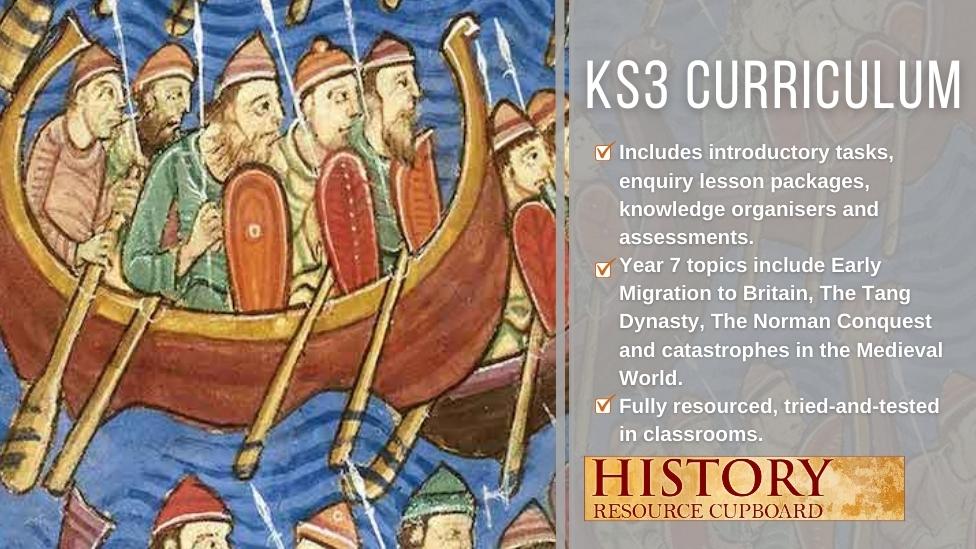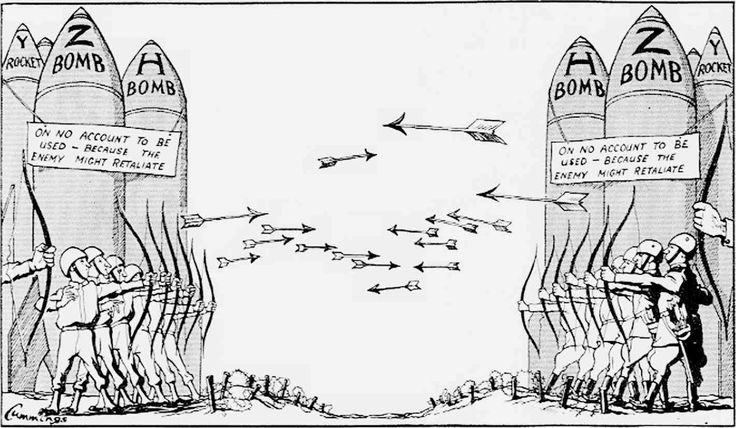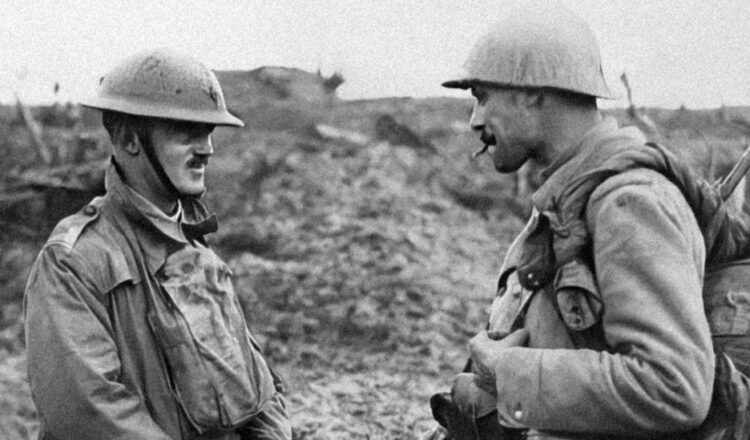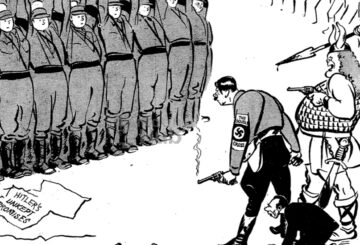The Purposes of Practical Demonstration
I developed the teaching techniques I describe below as a motivational tool early in my teaching career when, frankly, I was struggling to control students in a very challenging inner-city school.
Because I was then suddenly teaching them differently to the accepted techniques in use at the time, I found that students who had previously rebelled began to settle and to enjoy their learning of history.
That motivational effect never changed in the subsequent 32 years I spent in the classrooms of four comprehensive schools.
As I evolved the techniques – after dropping the original descriptive term Role Play as misleading in favour of Practical Demonstration alone – I found that they offered far more than mere motivation.
Not only did students find the activities memorable as well as motivational, but they proved to be highly effective to unlock difficult historical concepts and contexts without initially depending on the lengthy oral or written explanations that some students can find so off-putting.
In short, they were prepared to grapple with some advanced ideas.
Our subject cannot and should not be falsely simplified or watered-down and the need for developing literacy skill is clear.
However I quickly found that early use of practical demonstration to crack a problematic topic, concept or context created a degree of confidence and motivation that encouraged students to move more willingly to the study of extended written material than might otherwise have been the case.

Adding Variety To Your Teaching
Today, under the pressure of demands from some academy chains, teachers are being heavily encouraged to rely on centrally-issued PowerPoints falsely justified by the need for a consistent – almost corporate – approach.
Some are persuaded or coerced by claims that proper history can only be delivered by unimaginative teaching techniques.
All young people are not the same. A technique that works for some will not necessarily work for all.
A parody of Lincoln springs to mind – all of the students some of the time, some of the students all of the time, but nothing works for all of the students all of the time.
Every teacher therefore needs to be able to draw upon a variety of teaching techniques selecting the one most suitable to address a particular learning objective.
Practical demonstration is a valid and useful string for any teacher’s bow. I have no time for pedagogical snobbery. No one history teaching technique is ‘per se’ anymore ‘proper’ than any other.
What matters is that the technique selected is the one most likely to deliver rigorous history learning in the classroom on a particular topic or skill.
Techniques are merely pedagogical tools to facilitate an outcome. Why should one pedagogical tool be any less proper than another – as long as it can deliver an historically-justified outcome as successfully, or more successfully than an alternative technique?
The need for teachers to be able to teach in a variety of ways is as important, or more important, now than it has ever been.
Many students in today’s classrooms are crying out for teachers to turn off the PowerPoint; much as their forebears were once desperate for their teachers to abandon copying notes from the board in the classrooms of the mid-20th Century!
Practical Demonstration offers something different and something powerful. Please read on and, of course, make up your own mind as a thinking professional.
So, What is Practical Demonstration and What can it Offer?
Practical Demonstration is a teaching technique that illustrates and teaches concept and context in a memorable and time-efficient way.
It does so by using the students in the class or simple objects in a physical demonstration of a situation concept or context that illustrates and specifically targets the learning objective or objectives of a lesson.
… there is no denying that the overwhelming majority of students find Practical Demonstration hugely enjoyable.
Dr Ian Luff
Essentially, it is a form of instruction that provides a powerful alternative to oral or written explanation and offers many advantages in its own right:
1. Often a well-planned Practical Demonstration based on strong subject knowledge can cut to the heart of a topic and/or a concept in a highly time efficient way. Please see below the download of a Practical Demonstration of Mutually Assured Destruction which graphically illustrates in seconds of classroom time one of the central first-order concepts of the Cold War.

2. Practical Demonstration can provide an alternative approach to areas of study that, in a teacher’s experience, previous students have found problematic or uninspiring. The Practical Demonstration introducing the English Church shows that a highly unfamiliar context can be brought to life very quickly and simply without students even leaving their seats.
3. The wood of insightful overview that can all-too-easily be lost to the trees of overwhelming detail, particularly at A-level, can be very simply accessed through short Practical Demonstrations such as the French Revolution Football or the Constraints on Hitler shown in the download.
4. Practical Demonstrations such as that illustrating the relative power of the machine gun compared to the magazine rifle (see Machine Gun) or the Rhineland I designed to put the first key incident of what became the appeasement era in a decision making context are hugely memorable to students.
I have had former students come up to me years after they had left the school to say, “Do you remember when we..?”. This alone speaks volumes for the power of the technique in making a memory.
5. Practical Demonstration, as pointed out earlier does prevent students with lower literacy levels from being shut out of a topic. It can provide the initial access and confidence that in turn promotes a desire to persevere and learn.
6. Although these techniques should never be used for anything other than sound pedagogical reasons to address a clear learning objective in the history classroom, there is no denying that the overwhelming majority of students find Practical Demonstration hugely enjoyable.
I can guarantee from personal experience that students will try to push a teacher into doing more and more Practical Demonstrations throughout the year. Resist this – like any other teaching technique, Practical Demonstration is not always the best way to teach a historical skill or topic. Only use it when your professional judgement deems it appropriate.
How can the Benefits of any Practical Demonstration be Maximised?
Any Practical Demonstration should involve as many of the class as possible. If not involved directly, then students should be given a judgemental role or a specific aspect to observe and report back on in the post activity de-brief – such as that of investors choosing between rival armies.
It must be simple and performable with no rehearsal. Rehearsed script reading takes away all spontaneity and disadvantages both those who struggle with literacy and those who have to listen to a script being poorly read.
Teachers cannot afford the time for rehearsal and it is unnecessary for a succinct well-planned activity. It should not demand immediate advanced reading skills during the demonstration itself.
Much of the point of Practical Demonstration is its accessibility to all students. It must not be so protracted that it precludes follow up activities such as de-briefing and shared reflection.
These are critical for the teacher to judge how effective the learning has been and to consolidate the learning in students’ memories.
According to Daniel Willingham, memory is the residue of thought and skilful questioning after or during the activity can encourage complex thinking about key events.
It should lead to further study of a topic which may well make considerable demands on literacy. This cannot and should not be avoided in the interests of teaching rigorous history but those who do have difficulty with texts have been enthused and given incentive to try.
Never allow students to run. Many Practical Demonstration activities can be carried out while students remain in their seats but the more active ones such as Breakthrough in the West 2 must be carried out at slow walking pace in sufficient cleared space. Safety is paramount.
Practical Examples
Download Resources
If you feel tempted to use Practical Demonstration in your own classrooms, please do give it a go. I don’t think that you or your students will be disappointed.
Start with the introductory activities given here. If you find the technique useful please do take a look at the many other Practical Demonstrations I have put in print 3, 4, 5 in Teaching History magazine to which I owe my first chance to spread my work to a wider audience.
The first article was written 25 years ago and at least one activity has dated somewhat but it will still give other ideas for classroom use, as will the other two.
The legend that is Ian Dawson has also kindly hosted many of my activities on his superb Thinking History website alongside his own fabulous teaching ideas and those of many other teachers to whom he has also given a platform.
Before too long I plan to collate in website, book or pamphlet form the entire compendium of the Practical Demonstrations I have used in the classroom over a 32-year career. My ultimate objective remains to inspire teachers to develop Practical Demonstrations of their own. If I have succeeded in that I will be happy indeed.


Ian Luff taught history in state schools for 32 years as a Head of History and served as advisory teacher for History in the London Borough of Barking and Dagenham. He retired as a deputy headteacher in 2013 then taught on the University of East Anglia PGCE programme for five years. He was awarded his PhD in Education in 2021 and has been an Honorary Fellow of the Historical Association since 2011.






